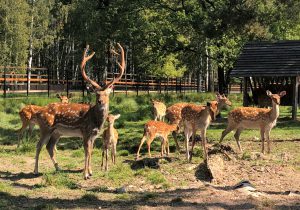
Activity Report
2020.02.21
Learning in Moscow
Hosokawa Misaki
Kanazawa University
Cultural Exchange Program
LOMONOSV MOSCOW STATE UNIVERSITY
20 students from Kanazawa University participated in a course that visited Moscow for about 10 days.
We went to many churches, and I was surprised that the Russian Orthodox Church had no chairs. The image of the church we usually see on TV is that chairs are lined up and believers are sitting and praying, but in Russia it is normal to stand and pray. If you live in Japan, the churches all look the same, but by visiting the site, I understood a little about Russian Orthodox Christianity. I was also surprised that there were few statues of God in Russian churches. Most of God was expressed by a picture called an icon. In Japan, many of the Buddhas are represented by statues, so I felt that was the difference from Japan. However, in the church of Sergiyev Posad in Moscow, there was a figure of a person who was thinking of the dead in front of the statue of Jesus Christ affixed to the cross. Looking at these scenes, I felt that the feelings of the important people who died were the same, although there were differences in the appearance of religion and prayers.
I also visited Losiny Ostrov National Park. This park was established in 1983 and is the oldest national park in Russia. In the national park, wildlife such as wild boar, deer, elk, squirrel, and fox live as well as trees and nature. One of the most memorable is the deer. When the national park was established, deer were in danger of extinction in Moscow. So, people brought 20 deer from the Far East to the national park and protected the deer in nature. There are now 200 deer in the national park, and many deer live other areas. I was very surprised that deer that had become extinct in the last 35 years can be inhabited without protection, and that it is protected in a national park where there is little human influence.





